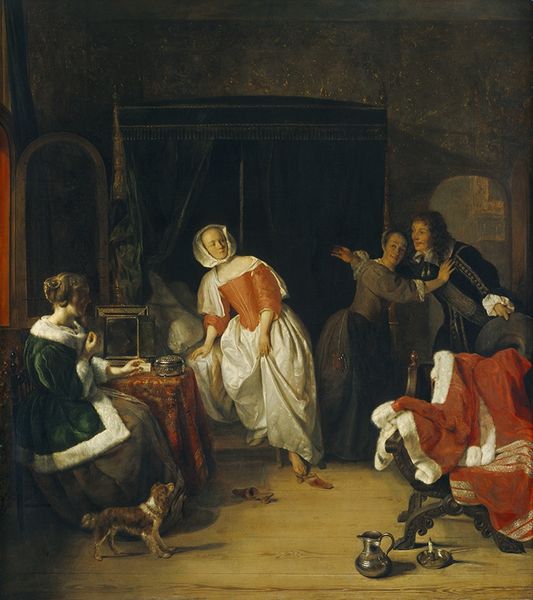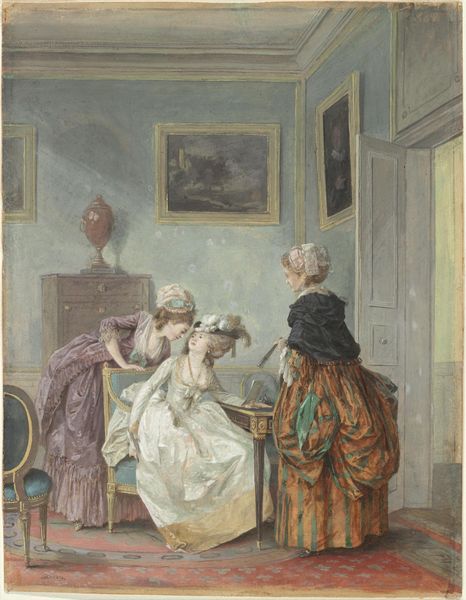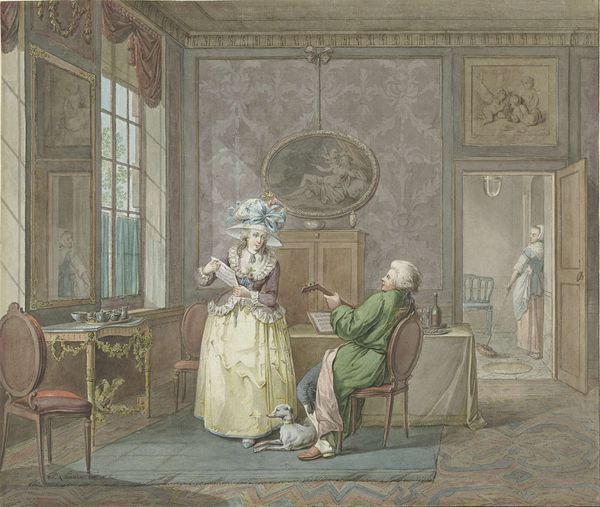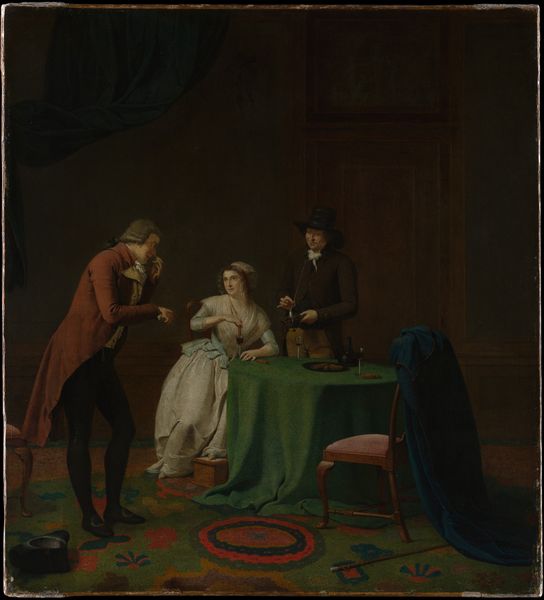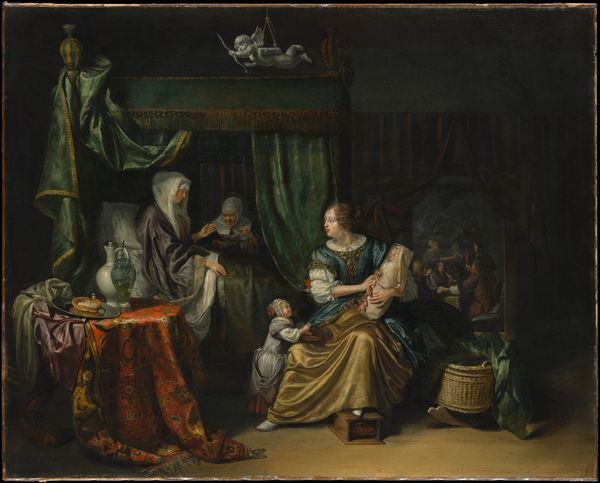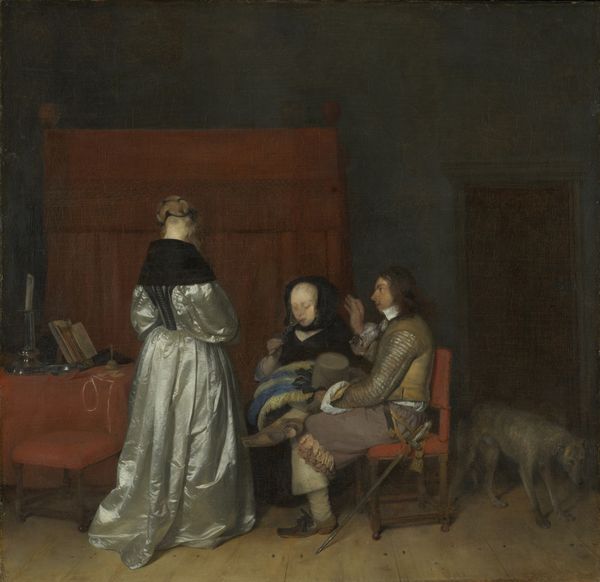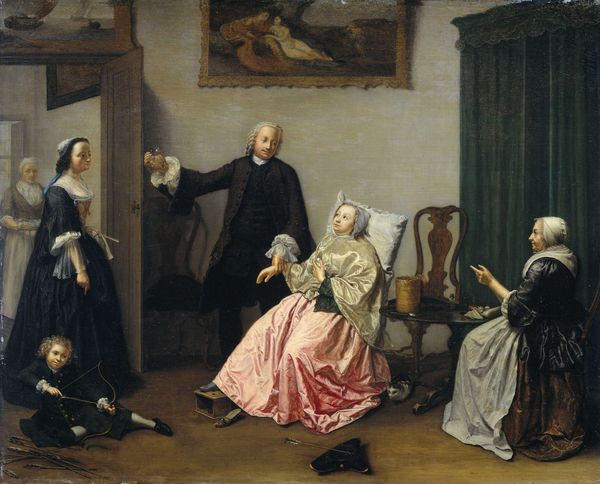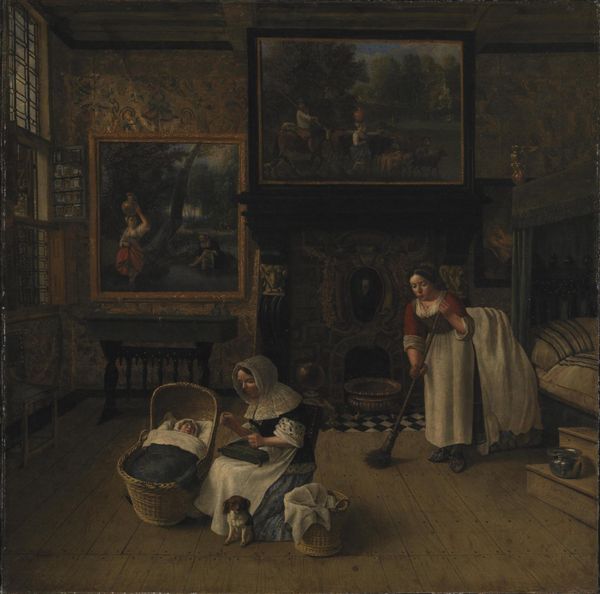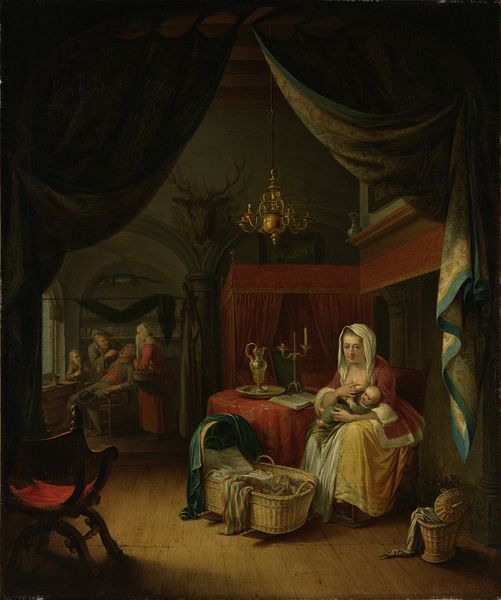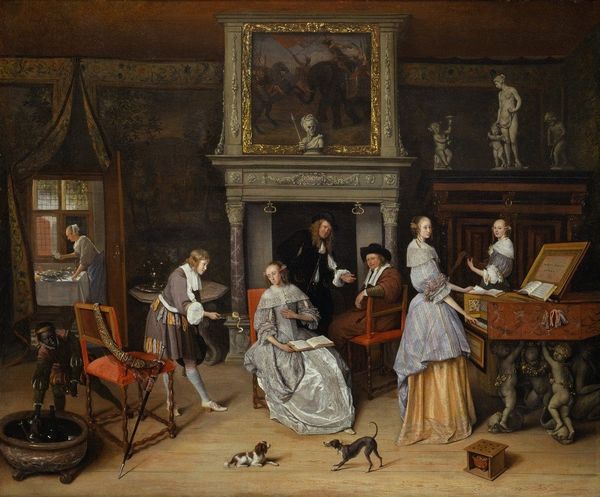
painting, oil-paint
#
portrait
#
baroque
#
dutch-golden-age
#
painting
#
oil-paint
#
oil painting
#
genre-painting
Dimensions: height 68.5 cm, width 86 cm
Copyright: Rijks Museum: Open Domain
Editor: So, here we have Cornelis Troost's oil painting, "Johanna en de joodse kooplieden," from 1741. It's a rather crowded interior scene, and there's definitely a sense of transaction happening. How do you interpret the socio-political context surrounding a work like this? Curator: The image clearly presents a negotiation, but it's framed within a very particular power dynamic reflective of 18th-century Dutch society. Look at Johanna's central position and opulent clothing compared to the more shadowed, almost caricatured portrayal of the Jewish merchants. It highlights the established hierarchy and potentially the prevalent attitudes toward Jewish people in commerce at the time. Does it strike you as a neutral depiction? Editor: Definitely not neutral! I see the contrast now – the exaggerated features of the merchants feel… loaded. Were such portrayals common? Curator: Sadly, yes. Genre paintings like these, while seemingly innocent depictions of everyday life, often reinforced existing prejudices and stereotypes. They served to solidify a certain understanding, or rather misunderstanding, of marginalized groups within the broader culture. The painting is therefore not just art, but historical document reflecting socio-political attitudes. Editor: That’s disheartening, but important to acknowledge. It really changes how I see the painting – it’s not just a transaction, but a statement. Curator: Precisely. It reminds us that art is never truly apolitical. It’s entangled with power, representation, and the dominant narratives of its time. And understanding this helps us to deconstruct the underlying ideologies at play. Editor: I’ll never look at a genre painting the same way again! It's a stark reminder to consider whose perspective is being prioritized. Curator: Indeed. Analyzing the "why" behind the image, in relation to the historical and cultural contexts, makes the experience of seeing that painting truly transform.
Comments
No comments
Be the first to comment and join the conversation on the ultimate creative platform.
